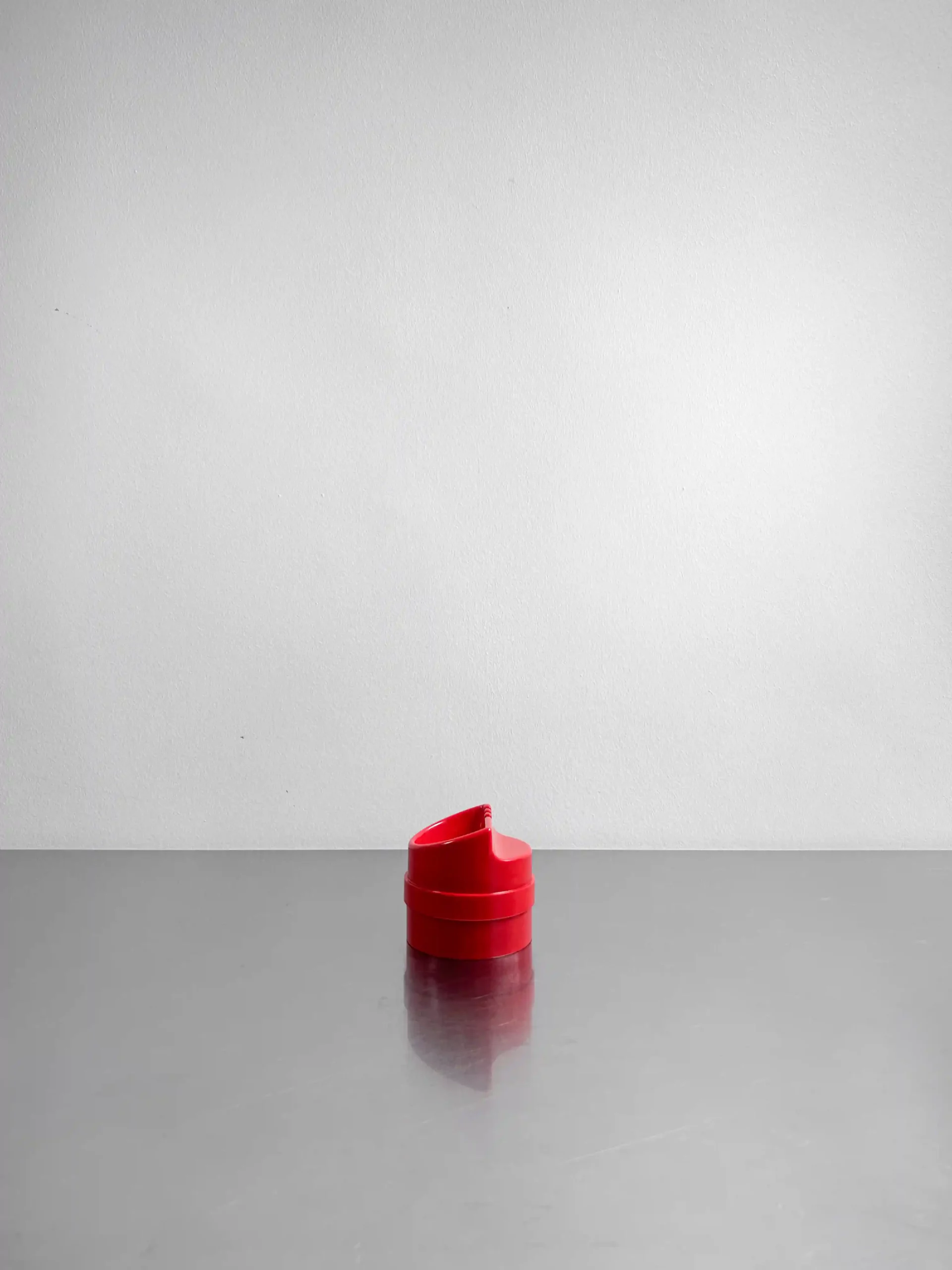
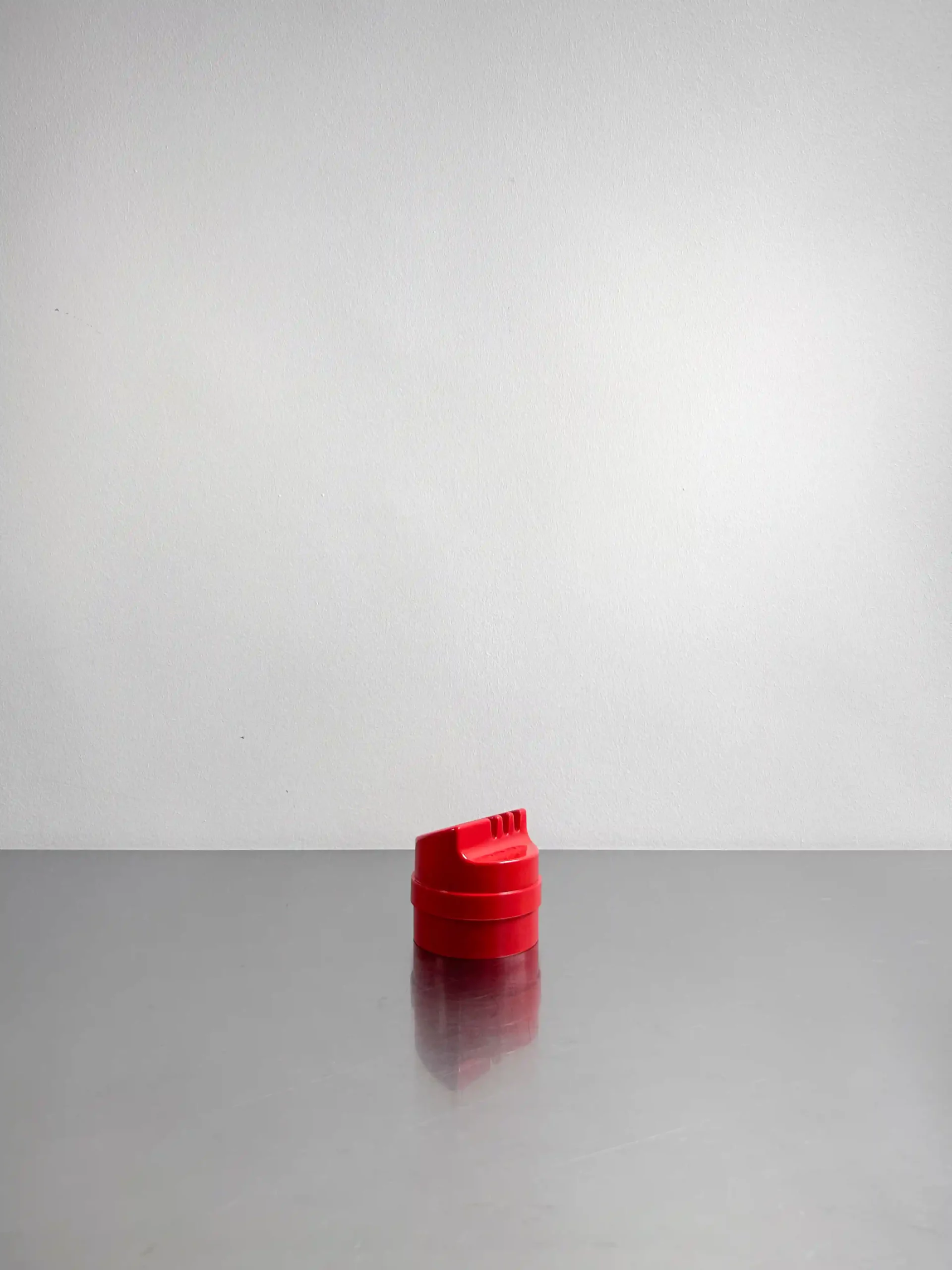
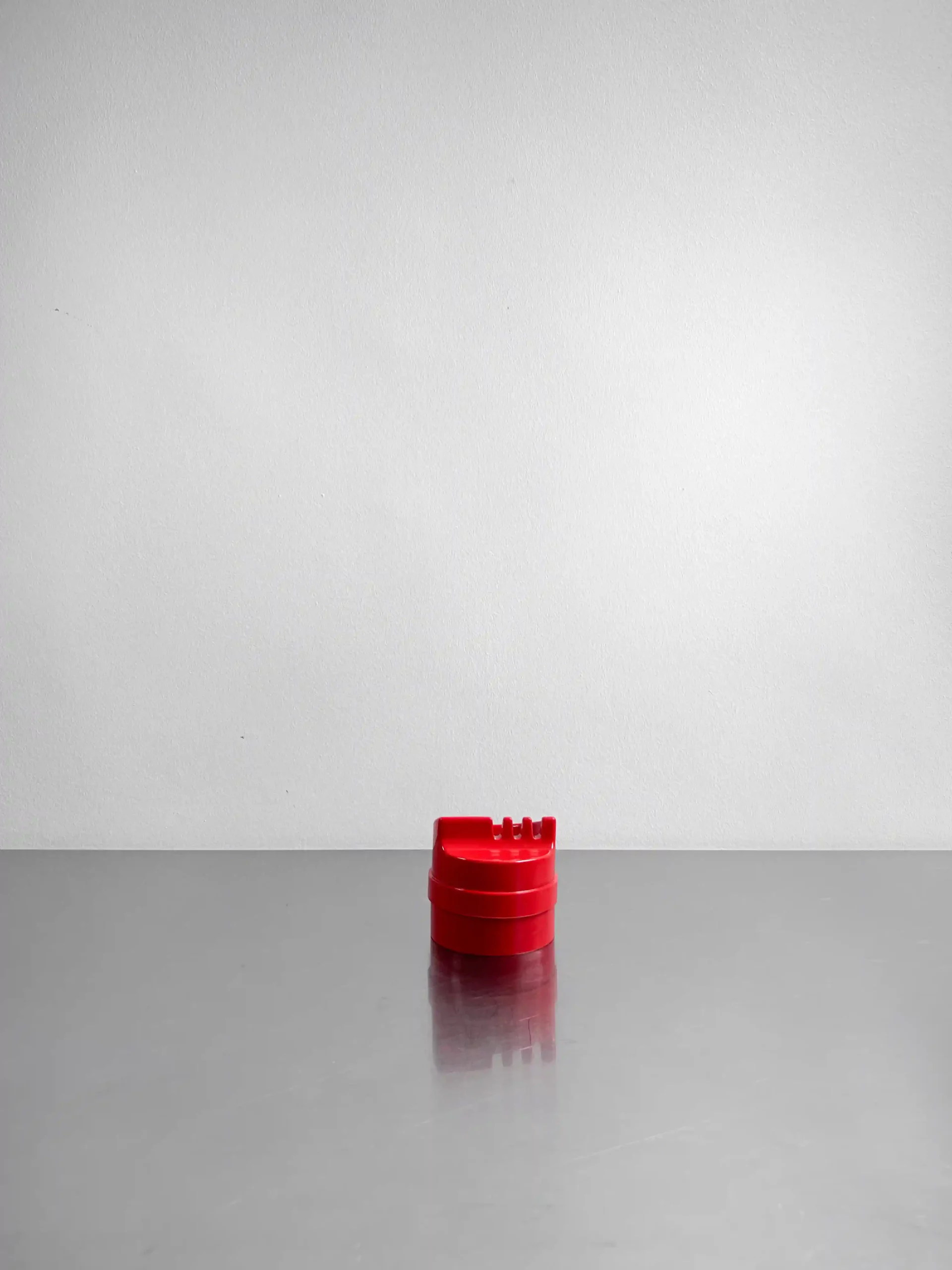
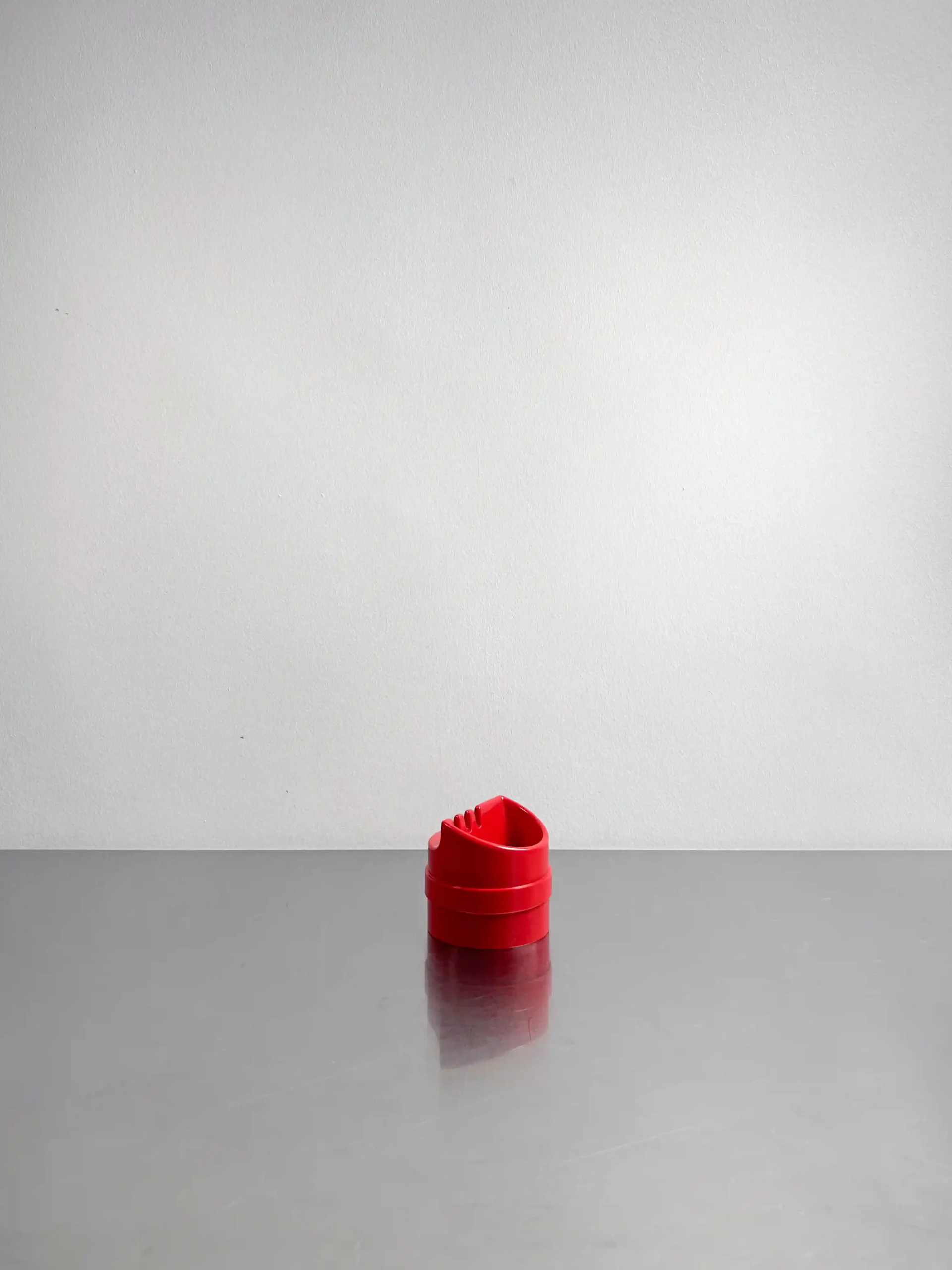
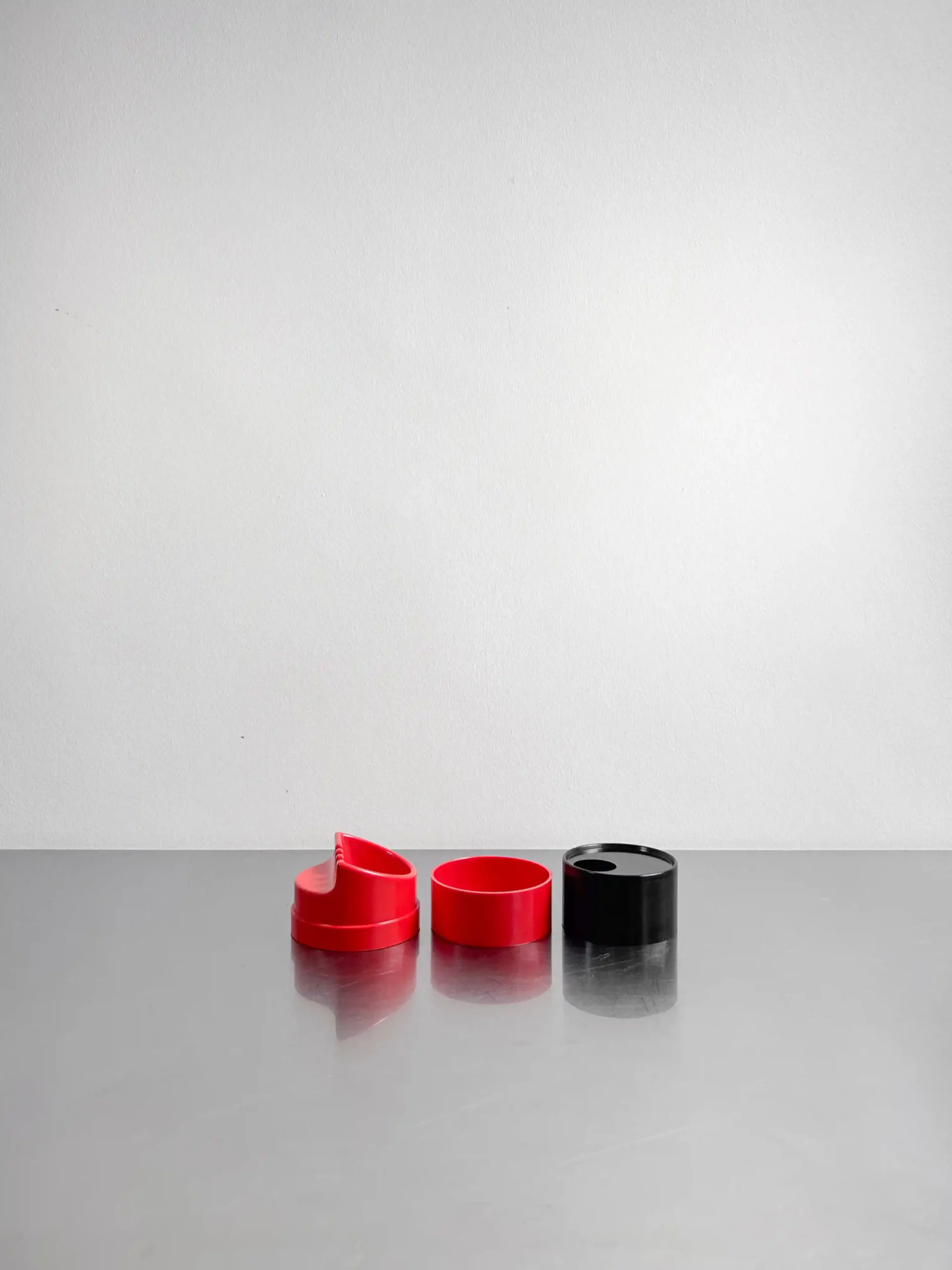
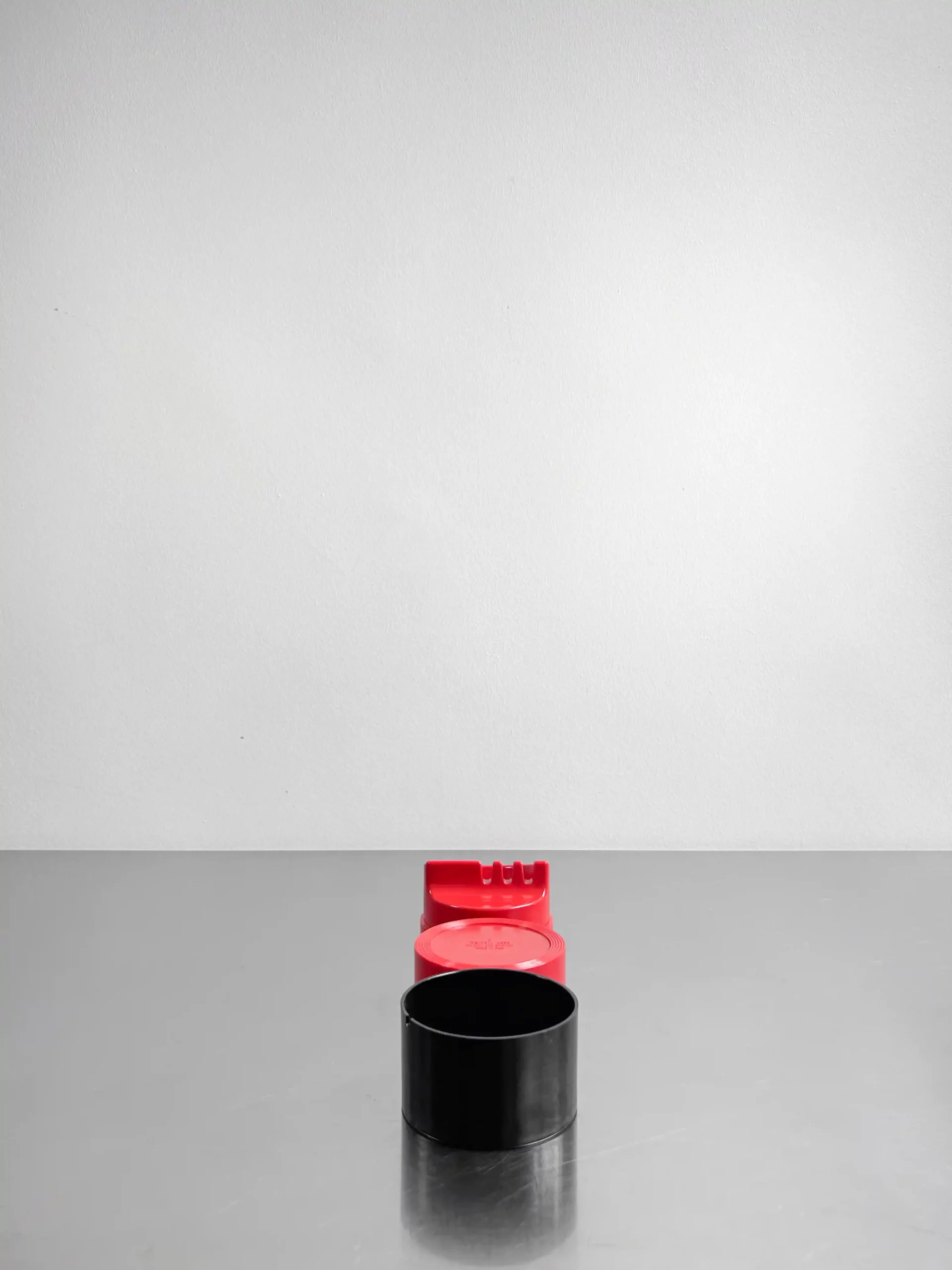
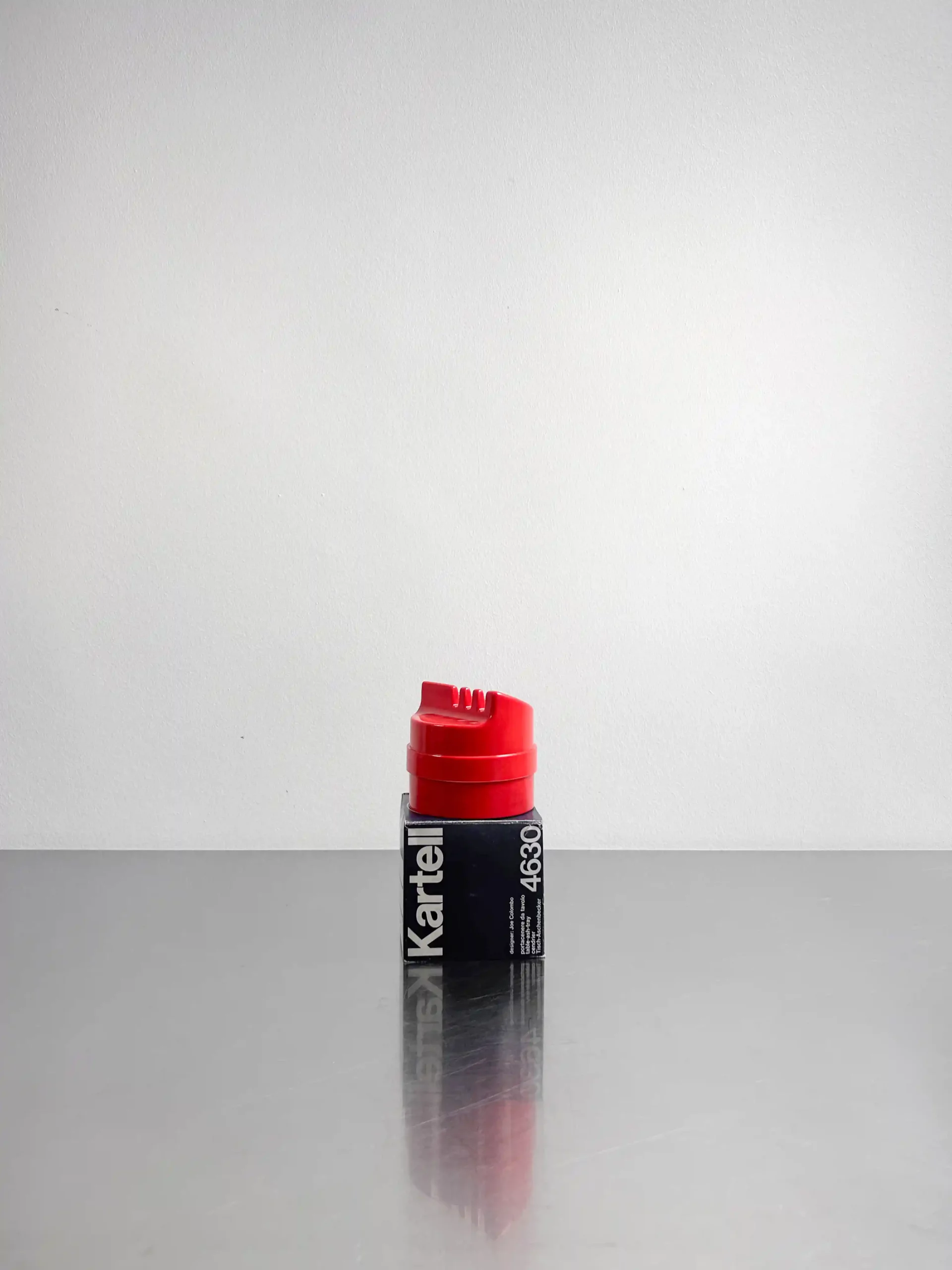
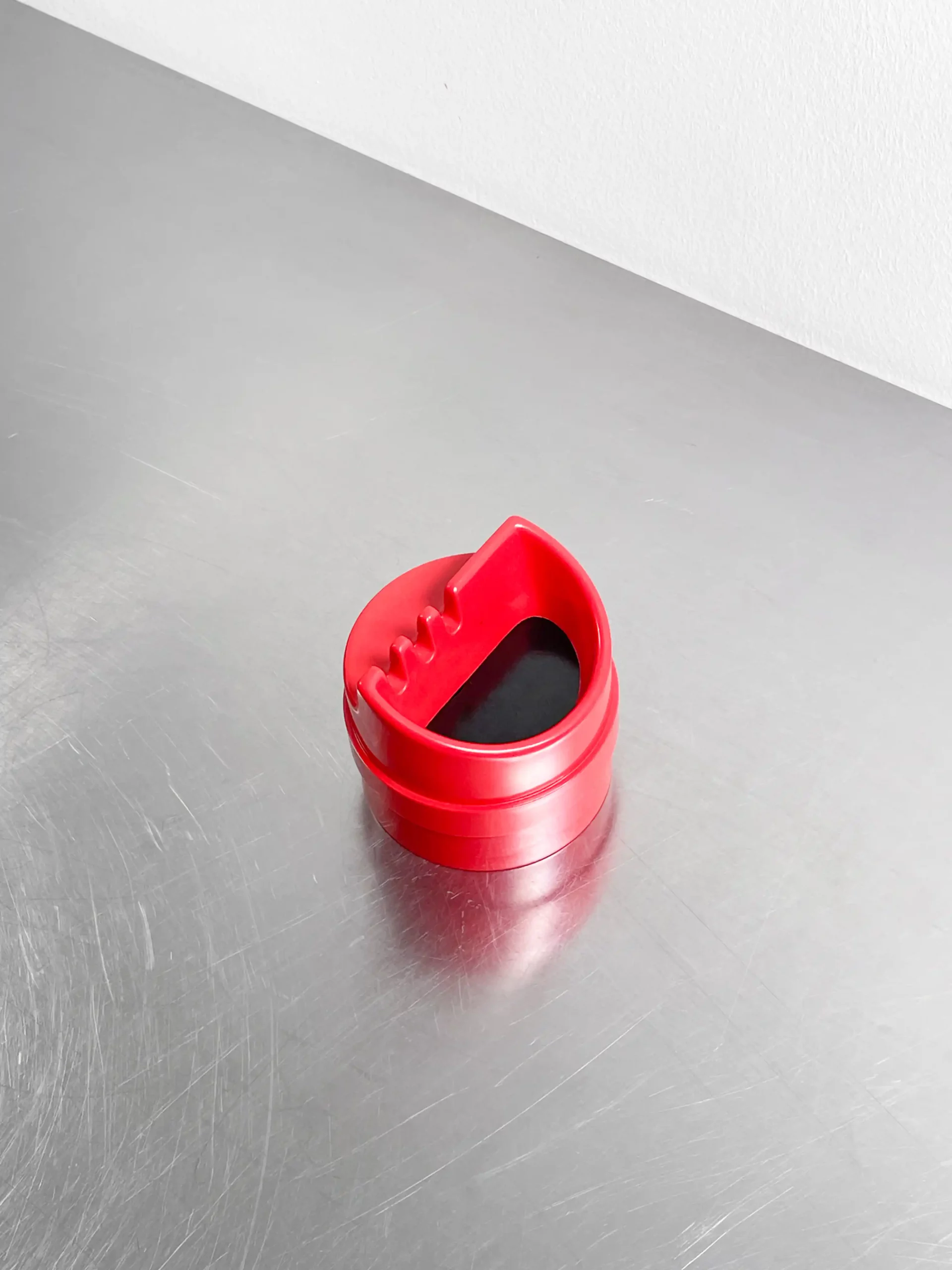
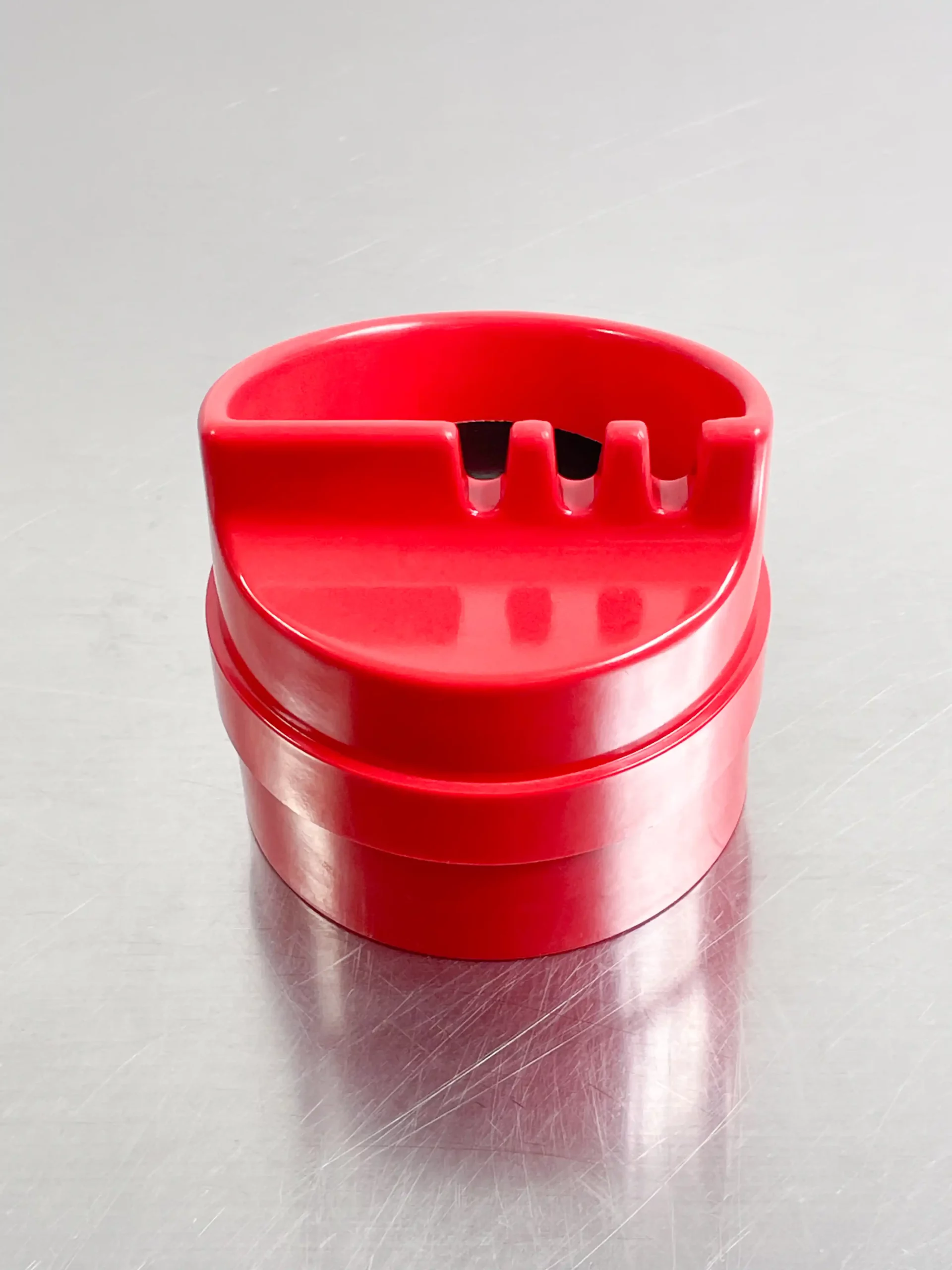
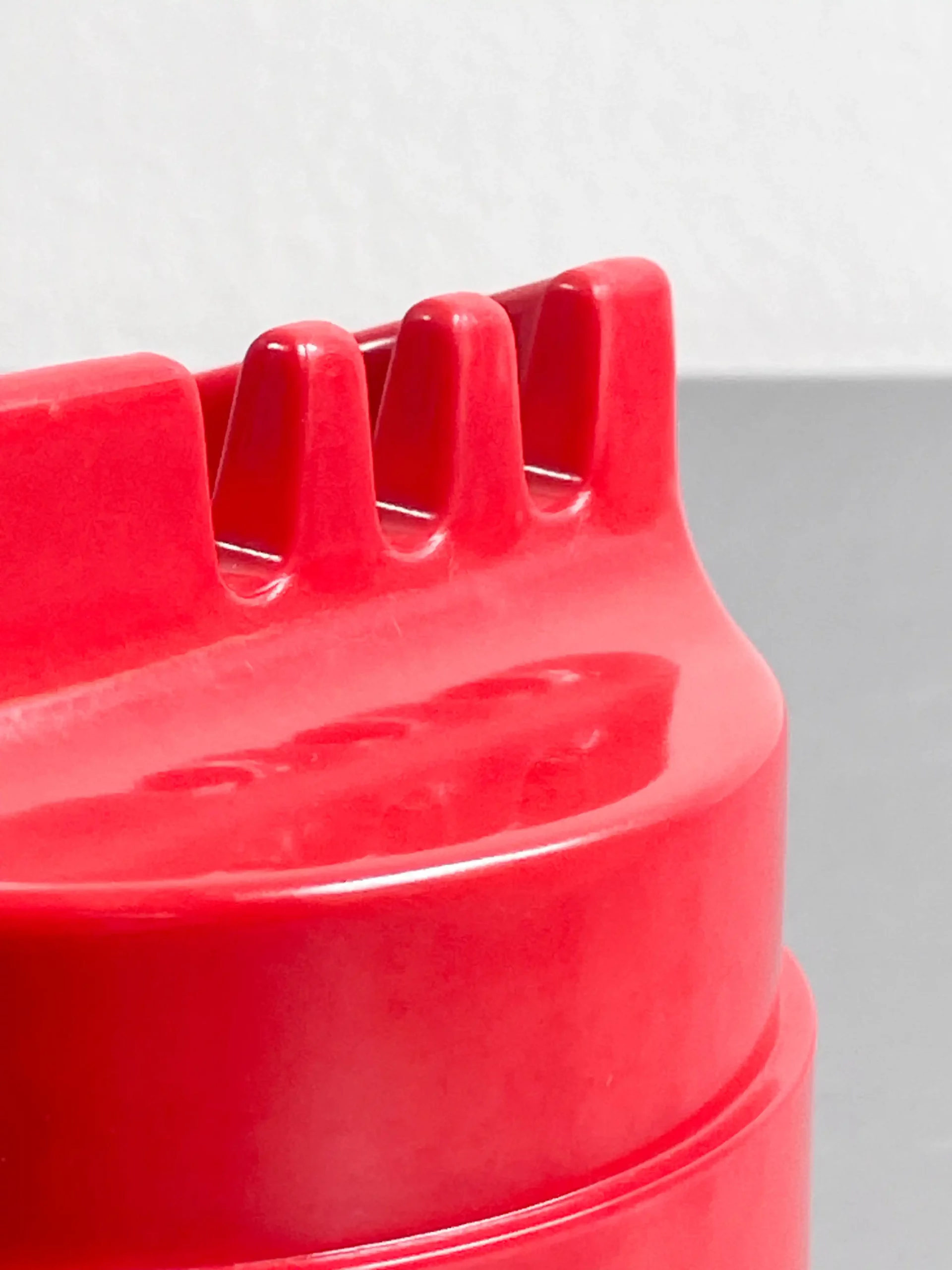
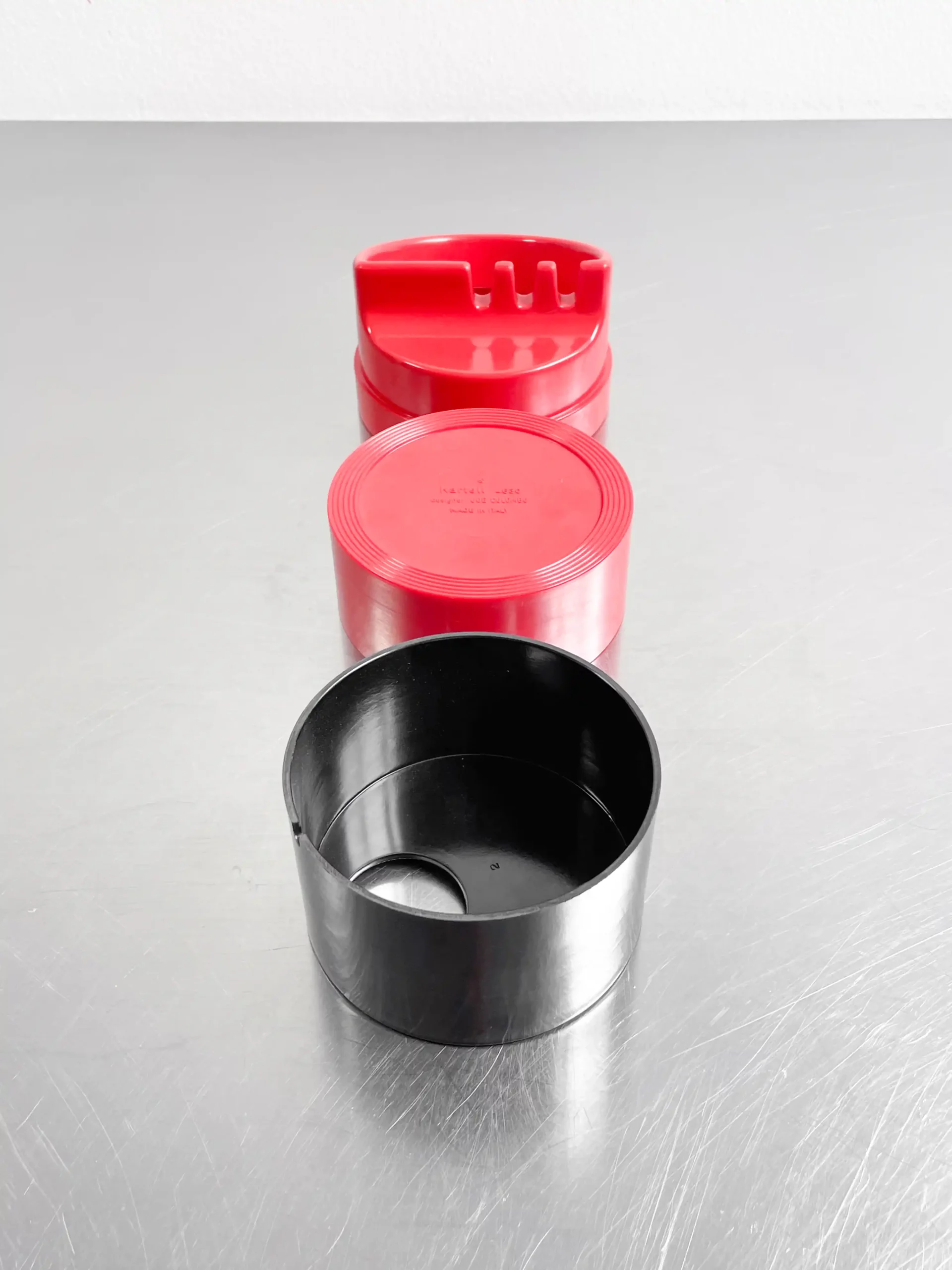
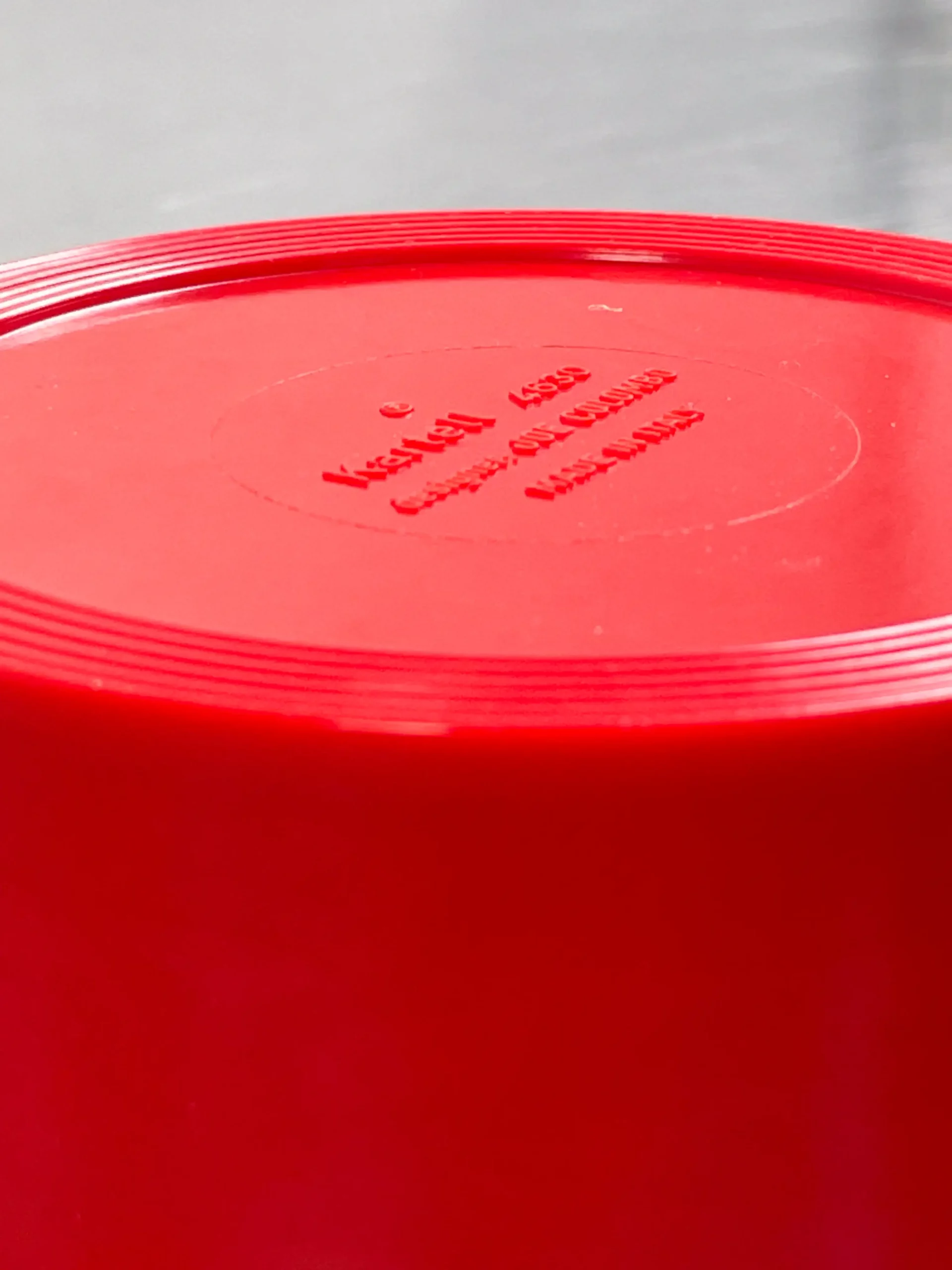
kartell 4630 by Joe Colombo
300.00€
Joe Colombo for Kartell. Rotocenere 4630. 1970/1973. Originally conceived in 1970 and put into production by Kartell in 1973, the Kartell 4630 Roto/Rotocenere ashtray is a work that best embodies the genius of Joe Colombo. Made two years after the designer's passing, it features a white plastic frame with elegant lines and thoughtful design, allowing the three-part ashtray to rotate to hide cigarette ashes. It stands out for its elegance, modernity and impeccable functionality. Unlike many of Colombo's other designs, this ashtray is a rare and one-of-a-kind piece.
The Ashtray is available red, new, with its original box.
Insider designer:
Colombo devoted himself to projects and designs spanning different disciplines, ranging from interior design (furnishings and fittings) to interior architecture and even industrial design. In his work in the latter area, projects include asystemic objects (not belonging to integrated series), electrical appliances, systematic objects (belonging to integrated and expandable series) and even functional monoblocks, consisting of different performances assembled in a practical way. Many of Colombo's ideas and designs remained on paper or materialized only in prototype form. However, this practice allowed Colombo to develop a conception of design as a generative moment. He began with furniture and particular design and then evolved, seeking open space and the absence of peculiar details. Colombo's production is universally recognized in the design world as visionary and innovative. He was able to anticipate some of the future developments in design and technology, especially through the conception of modular and complex systems. These systems, referred to as "living machines," represent new conceptions of the living environment: dynamic, flexible, futuristic, anti-nostalgic, global, and "smart". The ultimate goal of Joe Colombo's design is to apply modularity, rejecting closed space and opening up to an evolution of human functions rather than focusing exclusively on immobile furniture per se.
Insider brand:
artell was founded by Giulio Castelli, Michele Pistorio and Enos Rastelli, starting their business with the production of car accessories and plastic household items. The brand's success solidified in the 1960s, a particularly favorable period for Italian design. Recognition at the international level came in 1972, when Kartell participated in an exhibition at the Museum of Modern Art in New York devoted to furniture made in Italy. The pieces presented on that occasion, conceived by designers such as Gae Aulenti, Ettore Sottsass, Marco Zanuso and Richard Sapper, are still part of the museum's permanent collection. In the 1980s, as public interest in handcrafted furniture returned, Kartell faced a phase of crisis. In 1988, the company was acquired by Claudio Luti, Castelli's son-in-law, who had just left Gianni Versace after eleven years of collaboration. In the 1990s, a fruitful collaboration began with several internationally renowned designers, including Antonio Citterio, Ron Arad, Vico Magistretti, Philippe Starck, Piero Lissoni, and many others. In 1999, Kartell opened its eponymous museum, which houses more than 1,000 creations. In 2014, on the occasion of its 15th anniversary, the museum was renovated and rearranged, becoming part of the Lombardy Circuit of Design Museums in 2018. In 2020, during the Covid-19 emergency, the Kartell museum adopted virtual tours to allow the public to explore its collections. In 2003, Lorenza, a member of the second Luti generation, joined the company. In 2006, the design team expanded to include names such as Patrick Jouin, Marcel Wanders, Patricia Urquiola, Erwan and Ronan Bouroullec, and Tokujin Yoshioka. In December 2017, Kartell invested 10 million euros to acquire 2 percent of Bio-On, a company specializing in environmentally sustainable chemicals. In addition, the company has often promoted initiatives to support its hometown, Milan.










